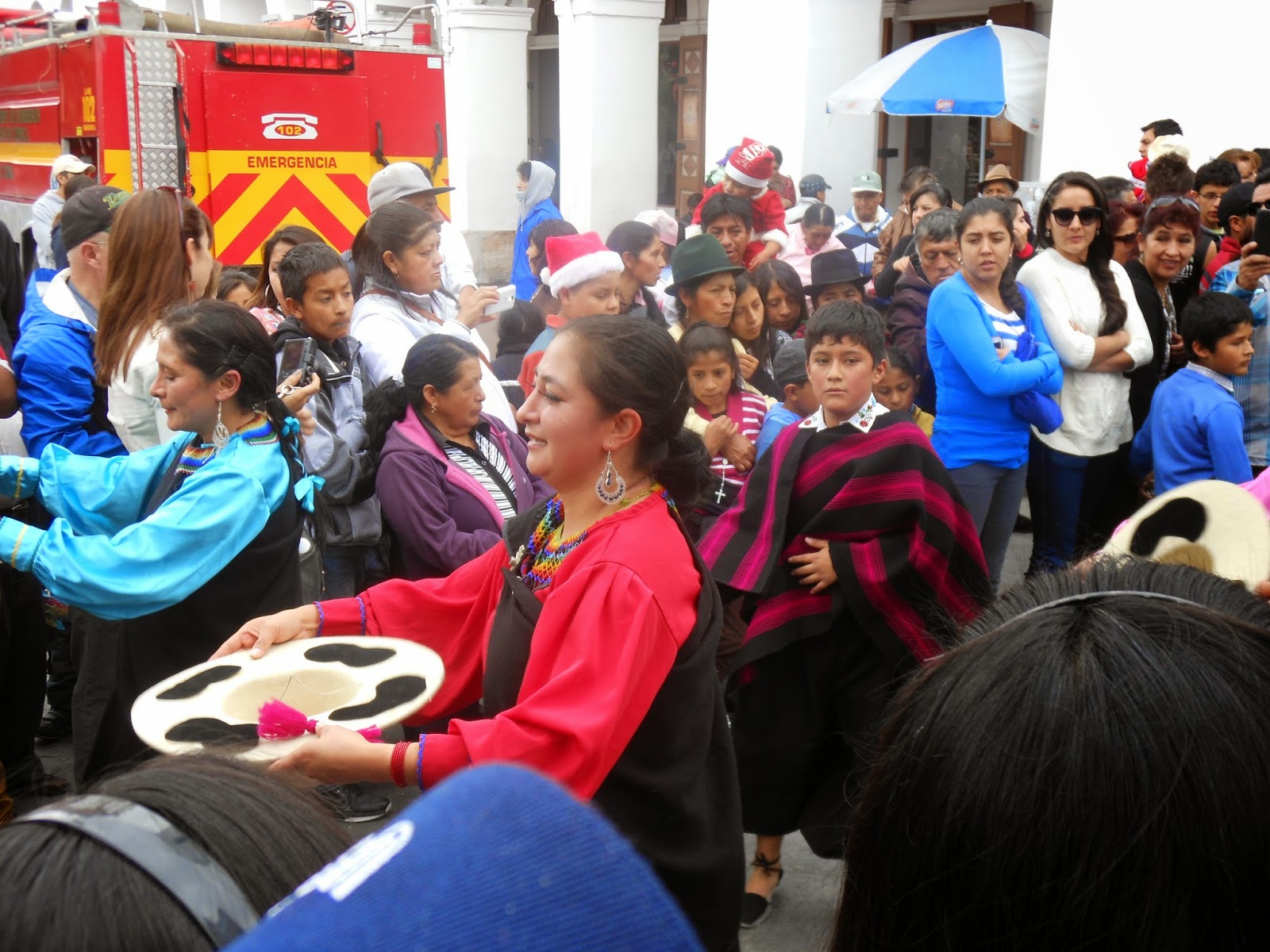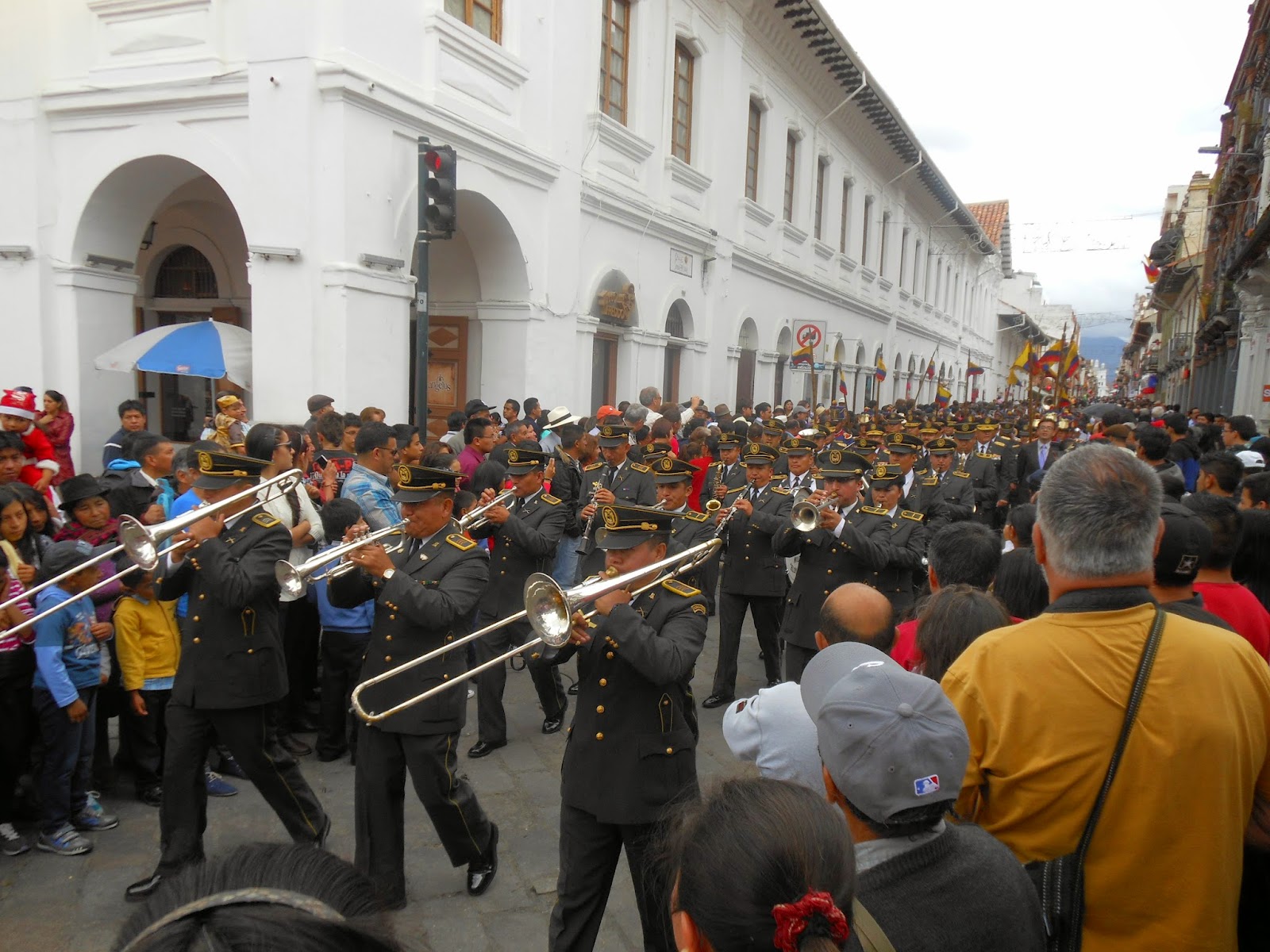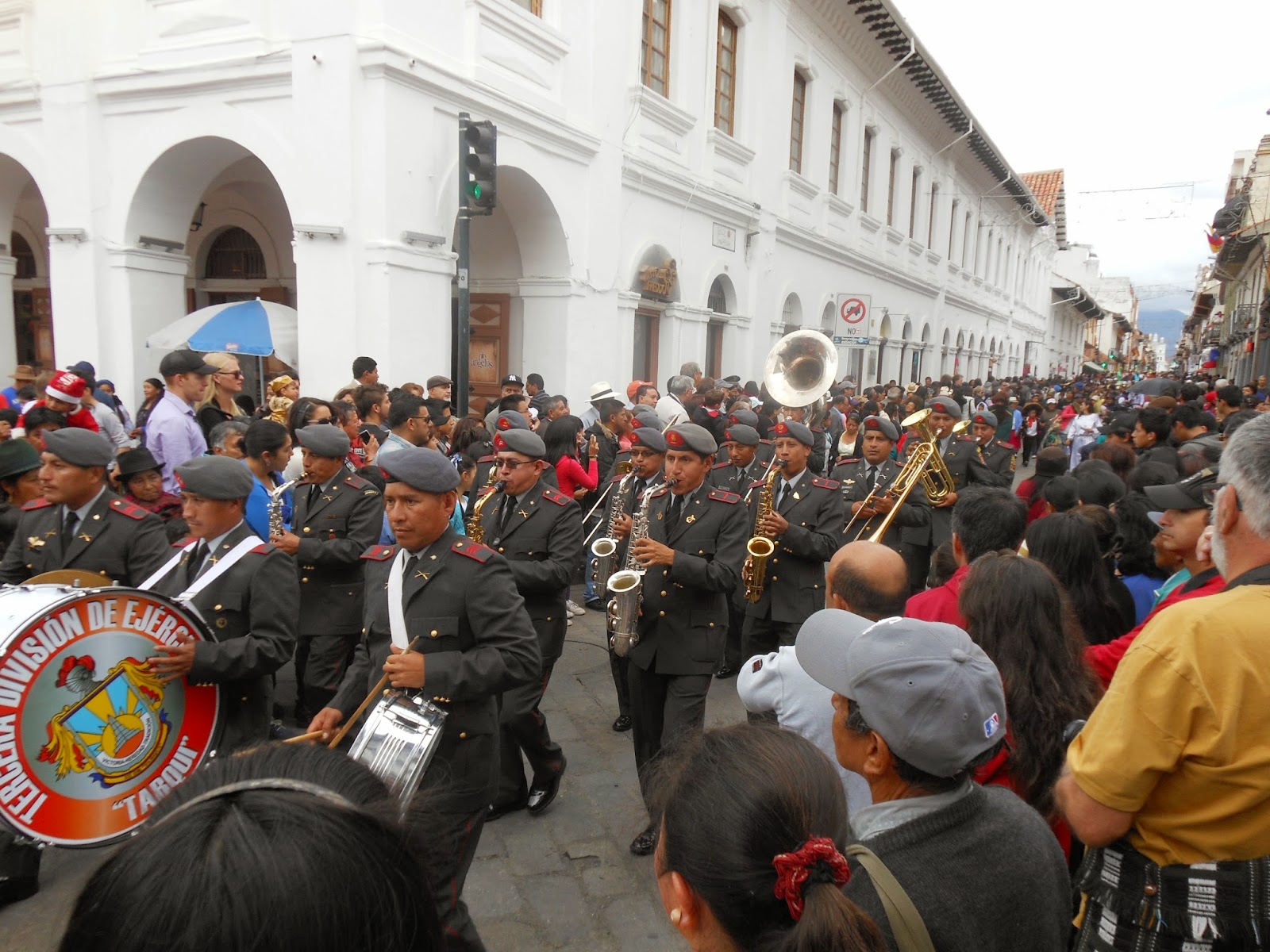To tourists and foreign residents, Cuenca's Christmas Eve “Pase del Niño” parade, or Passing of the Child, is a colorful, often bizarre, mixture of the sacred and the profane. To locals, it is a time-honored Christian festival of thanksgiving and homage that combines Catholic and indigenous traditions. Everyone agrees that it’s a lot of fun.

The eight-hour-plus procession features floats and decorated cars, many festooned with flowers, fruits and vegetables, empty beer cans and liquor bottles, roasted pigs and chickens. There are also bands, dancers and street performers, stilt-walkers and various Biblical characters. In recent years, the Three Wise Men have made an appearance on Harley Davidsons and Mary and Joseph have cart-wheeled the length of Calle Simon Bolivar. Everywhere there are children dressed in elaborate homemade costumes.
Introduced to Latin America by the Spanish almost 500 years ago, the Pase del Niño is a Christmas celebration in which likenesses of the infant Jesus are carried through towns and villages. In Ecuador, the tradition remains strongest in the Andean region. Organizers of the Cuenca parade claim that it is the largest Pase del Niño in all of Latin America; as many as 50,000 will participate in the procession, with about 200,000 more watching from sidewalks, balconies and rooftops.
The parade is actually a collection of hundreds of smaller parades, according to José Washington Noroña, one of the event's organizers. “Every neighborhood and town will have its own parade with its own entries. Each will carry its own statue of the Christ child. This is something that communities plan for the entire year.” Although most entries are from Cuenca and the surrounding area, some come from as far away as Loja in the south, as well as Otavalo and Ibarra in the north, says Noroña.
Although the Christmas Eve parade may be the main event, the Pase del Niño celebration is a three-month-long activity, beginning the first Sunday after Advent and continuing to Carnival in early March. The tradition also includes Novenas, nine consecutive nights of song, food and prayer, celebrated in homes and churches. On Christmas Eve, the “Misa del Gallo,” or Rooster Mass, is celebrated in the Cathedral and local churches. Besides Pase del Niño celebrations, Christmas in Cuenca also features nightly firework shows, concerts and craft sales.

Organizers say that the parade represents a strong connection to the United States. “Ecuadorians who live in the U.S. are major contributors to the parades,” says Noroña. “Those who have done well there send money as thanks for their safe passage and their success.”
The U.S influence is evident in many of the parade entries. Children wear cowboy outfits and such personalities as Bart Simpson and Richard Nixon, dressed up as Santa Claus, have made parade appearances. No matter the origin of the characters, Noroña says that the organizers try to keep the focus religious. “We don't dictate what participants can do, but we try to keep the focus on the birth of Christ. Last year, I saw a man dressed as Sponge Bob and thought he was a little out of place.”
The centerpiece of Cuenca's parade is an 1823 sculpture of the infant Jesus that was commissioned by Cuencan Josefa Heredia from an unknown artist. When the sculpture came into the possession of Cuenca Monsignor Miguel Cordero Crespo more than a century later, the Monsignor took it to the Holy Land and Rome in 1961, where it was blessed by Pope John XXIII. After the journey and the anointment, the statute became known as Niño Viajero, or Traveling Child, and has been the parade´s main attraction ever since.
The parade begins at about 10 a.m. on Christmas Eve and continues well into the afternoon. It begins at Iglesia Corazón de Jesus on Calle Gran Colombia and proceeds east down Simon Bolivar, ending a few blocks beyond Parque Calderon.

Along the parade route and in nearby parks and plazas, hundreds of vendors sell traditional foods, cotton candy, ice cream and candy. There are also several distribution points for chicha, a traditional holiday beverage; it´s free, but beware that the alcohol content is high.
The Christmas Even parade is organized and run by the Comisión Pastoral Niño Viajero, led by Cuenca Monsignor Gerardo Cabrera. In addition to individual contributions, the event is supported by major donors, or priostes. According to Noroña, the largest donor is Cuenca's Catholic University and its rector, Padre Cesar Cordero, nephew of Monsignor Miguel Cordero Crespo.
Please forgive my limited adjectives when it comes to describing everything we've seen and done this holiday season. I am still in awe.............
The parades, foods and general celebrations are so much fun.
Following are pictures from the children's parade on Christmas Eve:
There were so many people that Bob had to hold the camera up so he could get pictures.
Families, including grandparents and babies joined in the parade.
I think Bob took 175 pictures -
Totally amazing! Such family togetherness!
We were invited to a "White Elephant" Christmas Party.
We picked 'gifts' with playing cards!
So much fun and we met great people.
In Chavezpamba, a rural parish some 45 minutes from Quito, there are no colored lights in the windows, or wreaths on the doors. There is no exchange of gifts on Christmas Eve. In this village of 801 inhabitants, only a few houses have Christmas trees. The people here are very religious. On December 25, they visit the homes of elderly people living alone and the disabled. They help them clean their homes and decorate them with flowers. The residents also collect used clothing and prepare presents for the poorest people. Christmas has been celebrated this way for decades.
Chavezpamba is one of the smallest parishes in Quito's Metropolitan District. So it receives less money. While you may take garbage collection, potable water and electricity for granted, in this area only 18.8% of the population has all three services. On the plus side, the parish has one of the lowest unemployment rates in the region: 1.15%. Most of the people sow the land and raise animals including cuy which many have as their Christmas meal.
There was no Christmas Mass last night at midnight because there are elderly people who live far away. Because there is no light, it's difficult for them to return home in the dark. So Mass will be celebrated at 18:00 today.
We found another place with good food
Of course, I made French meat pie
Our apartment building hosted a Christmas Dinner that started at 10 PM lasted until 3 or 4 AM
We were fast asleep by that time.
Typical Ecuadorian meal time.
With Very loud music!!!!










































No comments:
Post a Comment